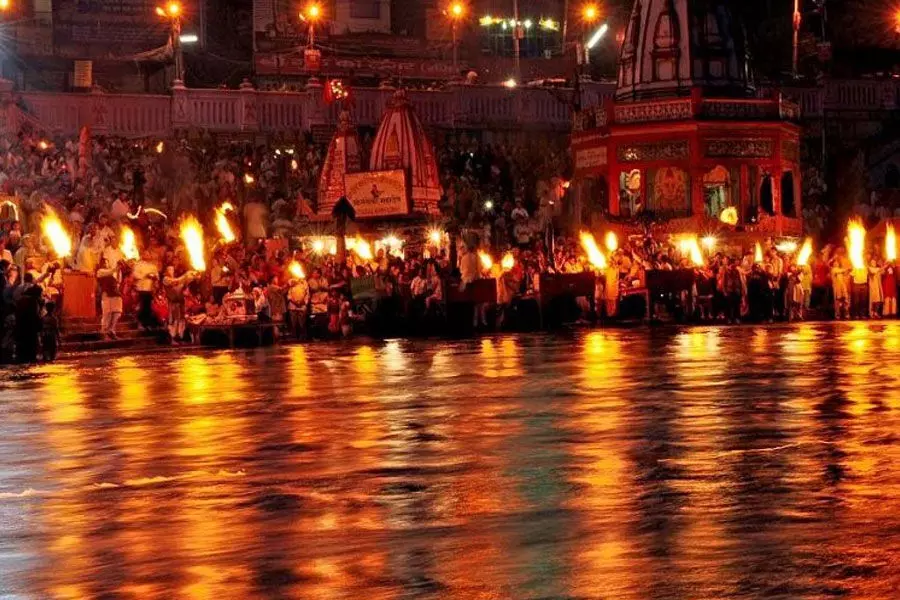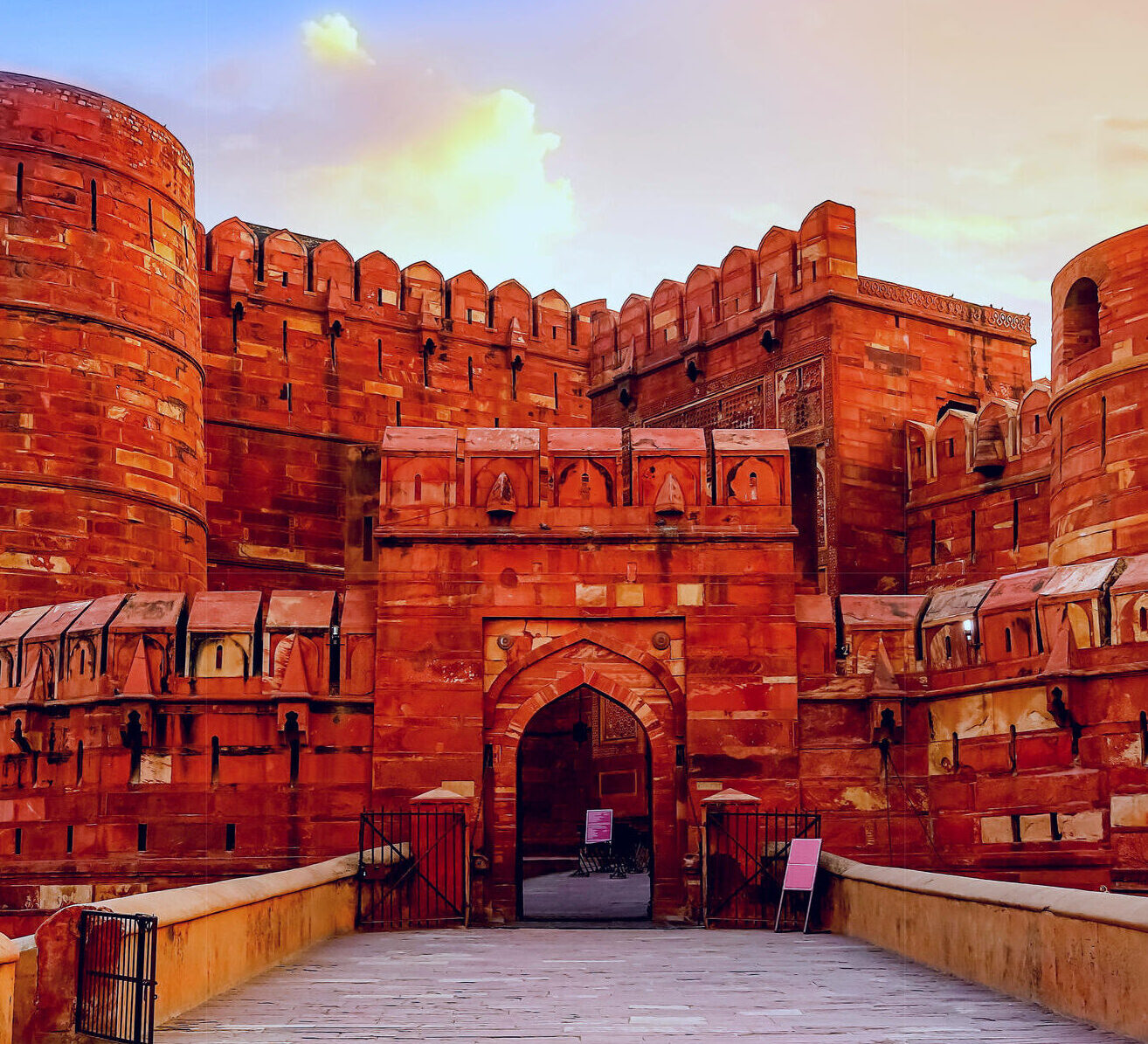







India Overview

One of the oldest civilizations in the world, India is a mosaic of multicultural experiences. With a rich heritage and myriad attractions, the country is among the most popular tourist destinations in the world. It covers an area of 32, 87,263 sq. km, extending from the snow-covered Himalayan heights to the tropical rain forests of the south. As the 7th largest country in the world, India stands apart from the rest of Asia, marked off as it is by mountains and the sea, which give the country a distinct geographical entity.
India is the favored destination of many travelers to Asia. This vast nation has enough to captivate travelers of any taste and travel style. From the hypnotic desert palaces of Rajasthan, to the wildlife parks throughout the country; from the pilgrimage sites of Varanasi, Sarnath and Madurai, to the ethereal alpine majesty of the Himalayan Foothills, India is bound to captivate any traveler. Explore India has developed a series of extensive programs, which incorporate the following destinations
The Capital – Delhi

The capital city of Delhi bears witness to generations of rule and cultural cross-fertilization. Delhi’s history stretches back over 3,000 years, with monuments of this extended history throughout the city. The Red Fort is one of the primary Moghul masterpieces, a self-contained city of palaces, dance halls, and meeting places. Nearby, the Jama Masjid is India’s largest mosque, with 25,000 worshippers filling the courtyard each Friday. Visit Raj Ghat, the site of Mahatma Gandhi’s cremation: a highly informative and captivating museum documents the Mahatma’s life through photographs and personal mementos, which provide a unique insight into India’s history.
The Taj Mahal – Memories of love

No visit to India is complete without a journey to Agra. The Taj Mahal is one of those extremely rare creations: an image so often seen in photographs and media, yet still imbued with a fresh, awesome power when one sees it in reality. Shah Jahan’s sublime testament to his departed wife, Mumtaz Mahal, is a marvel of marble and precious inlay. Visit it at sunrise and sunset to see the effects of differing lights. While in Agra, also visit some of the other sights of the city: Itm-Ud-Daulah, designed by Nur Jahan, the most powerful woman in Moghul history, and Agra Fort, where Shah Jahan was imprisoned by his son, Aurangzeb. A few miles outside of Agra is the abandoned city of Fatehpur Sikri, built by the Emperor Akbar, but abandoned due to water shortages. This enchanting, atmospheric site is often used as a stage set for Hindi films.
The Rajasthan – The land of Forts, Palaces and Cultural Traditions

For many visitors, the western desert state of Rajasthan is the archetypal India: broad sweeping desert landscapes, punctuated by imposing forts and castles. Men in turbans lead camels through markets, while women in heavy silver bangles and bold printed skirts balance towering loads on their heads. Jaipur is known as “The Pink City” for its use of soft pink sandstone. The City Palace is a treasure trove of wildly painted reception halls, and doors decorated with vividly painted peacocks and abstract designs of pure bold color. Nearby, the Palace of Winds reminds visitors of a wedding cake, its finely tooled stonework a marvel of masonry. Just outside Jaipur is the town of Amber, known for its massive fortress. Its walls are covered in Moghul style mosaics. Wander through the town, with its wealth of temples and ruins.
Temples and Sculptures and Spirituality

The spiritual heart of India is undoubtedly Varanasi, also known as Benaras, Kashi, and the City of Light. Situated on the banks of the Ganges, the most sacred Hindu City is a center for studying classical Indian music and dance, yoga, and Hinduism. The old city is a maze of small temples, shrines, and houses. An early morning boat ride on the Ganges is unforgettable: float past the GHATS, where men do early morning yoga, and women fetch holy water from the river to anoint the many small shrines throughout the old city. Varanasi is also world famous for its dazzling silks and saris. There are often music festivals and performances. Travel to Sarnath, whose tranquil atmosphere is highly appropriate for this site of the Buddha’s first teachings. Several monasteries and universities are active here; it is also a popular site for families to escape the busy pace of Varanasi.
The Tiger Land

Many people are drawn to India to visit the fabulous wildlife parks. Travel to the lush Ranthambore National Park where Project Tiger originated. Although few tigers survive, the park has many chital, nilgai, panthers, storks, serpent eagles, and glorious paradise flycatchers. Madhya Pradesh is home to two of the best parks in India. Bandavgarh is said to have the highest density of tigers in any park in India. There are also lovely rock-cut caves and a magnificent fort on the grounds. The park is particularly fine for bird-watchers. Rare hornbills and many kinds of rollers live here. Nearby, Kanha is a vast range of savannah, forest, hills and rivers, covering over two thousand square kilometers. Many aficionados consider Kanha to be the finest park in India, with hundreds of species of animals and birds. Indeed, it is sometimes known as the NíGorongoro of India.
Spiritual South

Southern India offers the visitor with a distinctly different experience than the north. The inhabitants of Tamil Nadu pride themselves on being “true Hindus”, their culture and religion relatively unaffected by the Mughals of the North. Madras is Indiaís fourth largest city, with many examples of British influence, including St Mary’s Church, and Fort St George. The Government Museum houses an excellent collection of South Indian arts, such as an unsurpassable series of Chola bronzes. Also visit Kapaleeshwara Temple, with its archetypal Dravidian gopuram. A highly recommended day trip takes in Kanchipuram, one of the seven sacred cities of India, and Mahabalipuram, with its collection of temples along the seafront including the Five Rathas, and the Shore Temples. Drive to Pondicherry, an unusual bastion of French flavor.
Western India

Bombay is the starting point for many great journeys in Central India. Visit Elephanta Island with its remarkable Trimurti sculpture. Visit Malabar Hill with its commanding views over the bay. Travel to Aurangabad, your base for exploring some of the greatest wonders of India: Ajanta and Ellora. These cave temples house some of the finest art treasures of the world. Ajanta is a series of rock cut temples along a river; the cave walls are decorated with some of India’s earliest Buddhist paintings. Ellora has Hindu, Buddhist, and Jain temples, including the Kailasa, the largest rock cut temple in the world. These two sites are breathtaking on both an aesthetic, and engineering level, with meditation halls hewn out of cliff walls, and thousands of tons of rock shifted away to create free standing temples. Also visit Daulatabad, with its vast fort rising out of the barren surrounding plains
Eastern India

The residents of the Bengal City of Calcutta consider themselves the intellegensia of India, and have good reason for this self-image. Some of India’s greatest thinkers, writers, and artists have come from the vicinity of Calcutta: Rabindranath Tagore, Satyajit Ray, Ramakrishna, and Sri Aurobindo. This paradoxical city has a superb museum, the Victoria Memorial, one of the world’s largest planetariums, and fantastic markets. Travel to Darjeeling, the famed hill station with an unusually diverse history. Stroll through tea plantations, Tibetan markets, and the lovely Botanical Gardens. Set out early to Tiger Hill for a sublime sunrise: Kanchenjunga, Everest and a full 360-degree panorama are illuminated by the early morning light. Visit Ghoom Monastery and other active Tibetan Buddhist monasteries
The Himalaya

The Western Himalayan region of India is one of the wildest, most beautiful parts of the country, accessible to people of all levels of fitness. From Delhi, travel north to Chandigarh, the unusual city designed by Le Corbusier. Continue north to one of the most beautiful areas of India, the Kangra valley, famous for its school of paintings. Visit McLeod Ganj, the site of the Tibetan government in exile. The Dalai Lama’s presence in this mountain town continues to draw a steady stream of refugees escaping Chinese oppression and torture. The Library of Tibetan Works and Archives offers daily classes in Tibetan Buddhist Philosophy. The library also has a museum of thangkas, statues, and other sacred objects













